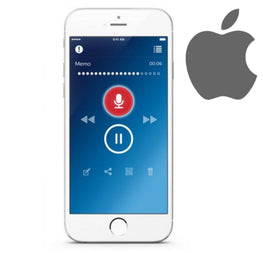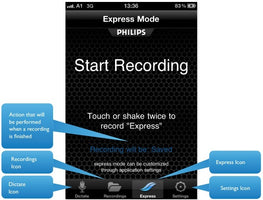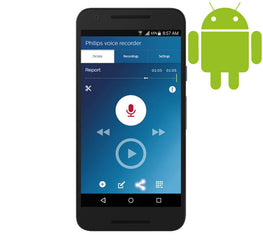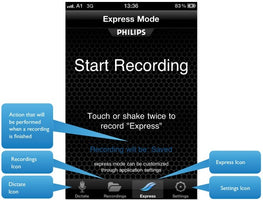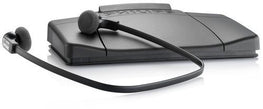Searching for a voice recorder for dictation? It's time to convert to digital dictation from tape.
Why dictation is switching from analog to digital voice recorders and what features you should look for.
While email and text messages have become standard daily communication for everyday conversations, voice recorders still remain the desired type of medium for a range of professional industries that require accurate dictation. While we normally associate voice recordings with doctors making patient notes, reporters conducting interviews, and lawyers recording depositions, you may now also see people recording client phone conversations in marketing firms, top level executives recording meetings to send emails to lower level employees about company decisions, and other circumstances.
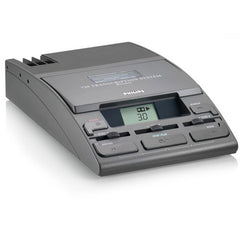
So, what is the best way to make a voice recording for dictation? What properties should you look for in a voice dictation machine?
Analog Voice Recorders are Old Technology
In the past, analog voice recorders were the norm. An analog recorder consists of a dictation machine that had a cassette tape inside. Your voice would be recorded onto the tape as sound waves are imprinted onto the master tape using magnetization. The sound that was recorded was a continual wave onto the tape, as anything else within the vicinity of the tape would also be picked up by the recorder and become part of the taped sound. When the recorded voice was converted back into a vibration from the speaker unit, it would be produced into actual continuous sound waves picked up by the transcriptionist.
A major drawback of an analog voice recorder involved "sound bleed." An analog tape would be dictated and then be reused again for another voice recording session. However, at times the previous tape recording could still be heard faintly in the background, making it more difficult to separate the new voice recording from the previous one. Another problem involved security. An analog tape could be accessed by anyone as it wasn't encrypted with any security features. Storage space was also limited. Lastly, the magnetic tape would lose its magnetic properties over time to give a poorer quality, as copies of the recording would also sound more muddled from the previous one due to degradation.
Digital Voice Recorder Technology Providing Cost-Effective Solutions
Digital recordings began taking the scene to offer a better range of dictation machine possibilities. When a digital recording is made, the sound is recorded as sampled "bits" of 8 bits or 16 bits in large units. Previously, there was a limit to the number of units and bits that could be recorded. Yet compression and sampling rates have dramatically improved over the years.
Digital voice recordings could have an enhanced quality based on the file format in which the sound is saved as. WAV files first became commonly used as they possessed a good sound range and depth. Unfortunately, the files compression rate was poor. Also, vendors of WAV files would alter the formats so the consistency of files may not have been the same. MP3 files became the next preferred method in saving voice files. The file format was portable and provided more than what was actually needed in dictation systems.
The Olympus, Phillips and Grundig became pioneers in digital voice recorder technology as they came out with the Digital Speech Standard (DSS) file format. The DSS format is a sound compression scheme that would ignore other sound frequencies to provide a crisp and clear sound that still preserved the vocal range. Over the years, the DSS file format was improved to include more digital solutions that included options such as recording at two different sample rates as well as encryption functions for increased security.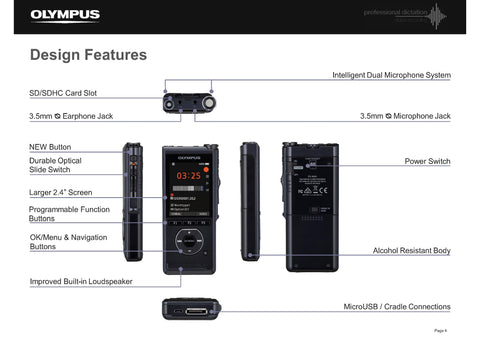
What to Look for in a Digital Recorder
When searching for the best voice recorder and dictation machine system for business purposes, a professional digital voice recorder is desired over a regular consumer recorder. Some features to look for include:
☑ The ability to rewind, fast forward and digital append (overwrite) the digital recording. Most digital note-takers cannot do this. You need a professional series recorder from Philips or Olympus to edit on the fly recordings.
☑ Different recording modes such as standard play, long play and stereo quality options
☑ DSS file format for better compatibility
☑ Removable memory
☑ LCD display
☑ Programmable functionality buttons
☑ Microphone sensitivity adjustment settings
☑ Voice recognition software compatibility
There are many digital voice recorder offerings out on the market today. One of the top offerings is the digital Olympus voice recorder DS-9500 with the AS-9000 transcription kit. Another secondary offering is the Phillips voice recorder DPM-8000. When looking at today's options, there are some incredible dictation solutions that are offered beyond the basic professional digital features listed above.
In addition to superior audio quality, noise cancellation features help to increase the accuracy of the digital speech recognition technology. The recorder can suppress noisy surroundings so that the dictated voice comes in clearer and crisper in the recording.
Wi-Fi features are also highly desired in dictation machines today. The Wi-Fi allows for you to share files anywhere at any time on any computer device that can access the local or network folder. You can also improve workflow by emailing the file.
With concerns of unauthorized security breaches and stolen data information, the newest digital voice recorders offer 256-bit AES encryption systems. Data can also be secured using a 4-digit pin number so that you have greater control on who can access the digital recording.
Moving into the Digital Age of Recording Technology
When it comes to deciding between analog and digital voice recordings in professional settings, business is rapidly moving towards digital recorders due to their increased sound quality, encryption features, Wi-Fi compatibilities, ease of use and price tag. Analog voice recorders are slowly fading away to give way to more digital offerings that are keeping in pace with the innovation changes that are occurring in today's technologically-advanced society.
Check out the dictation and transcription equipment, such as the Olympus DS-9500 digital voice recorder with the AS-9000 transcription kit, available today and select the best voice recorder for your needs.